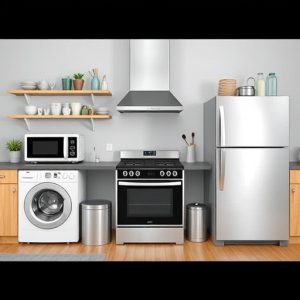Leveraging the safety features of modern major appliances like ovens and ranges is crucial for secure cooking. Installation requires workspace clearance, proper ventilation, electrical access, and adherence to manufacturer guidelines, with special attention for gas stoves. Common issues include malfunctioning heating elements and control boards, emphasizing troubleshooting before repairs. Regular maintenance through cleaning, inspections, and part replacements extends lifespan and enhances safety. For complex issues like faulty heating or strange noises, prompt professional assistance is vital to mitigate safety risks.
Ensuring safe cooking starts with your oven and range. This comprehensive guide delves into the essential aspects of installing, maintaining, and repairing these major appliances. From understanding safety features like heat sensors and automatic shut-offs to troubleshooting common issues, you’ll learn how to keep your kitchen equipment in top form. Discover expert tips on regular maintenance and know when it’s time to call a professional for repair, ensuring a seamless and secure cooking experience.
- Understanding Oven and Range Safety Features
- Step-by-Step Guide to Installation
- Common Issues and Troubleshooting Tips
- Expert Advice on Regular Maintenance
- When to Call a Professional for Repair
Understanding Oven and Range Safety Features
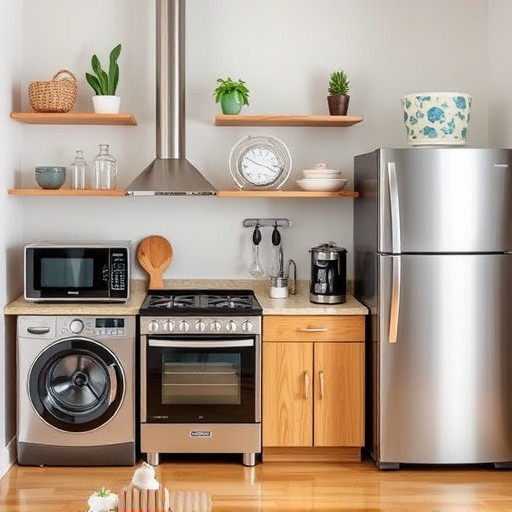
Understanding the safety features of your oven and range is crucial for a secure cooking environment. Modern major appliances are designed with numerous safety mechanisms to prevent accidents and ensure user well-being. One common feature is the automatic shut-off function, which turns the appliance off if it detects excessive heat or forgotten usage, reducing the risk of fires and burns.
Additionally, many ovens and ranges come equipped with temperature controls and timers, allowing you to set desired cooking temperatures precisely. These settings help prevent overheating, ensuring your food cooks safely at the right temperature. Some models also have child-lock features, which physically secure the control panel to prevent accidental adjustments or turning on of the appliance. These safety features contribute to a more peaceful and worry-free cooking experience.
Step-by-Step Guide to Installation

When installing a new oven or range, safety should always be your top priority. Here’s a step-by-step guide to ensure a secure setup for your major appliances:
1. Preparation: Start by clearing the workspace around the stove’s location. Ensure proper ventilation and access to electrical outlets. Read through the manufacturer’s instructions thoroughly before beginning. For gas stoves, turn off the supply valves and check for any leaks.
2. Positioning: Place the oven or range in its intended spot, ensuring it’s level on all sides. Secure it with brackets or a stand designed for the specific weight and dimensions of your appliance. For stability, especially with heavy ovens, consider a professional installation service to avoid damage or injury.
Common Issues and Troubleshooting Tips
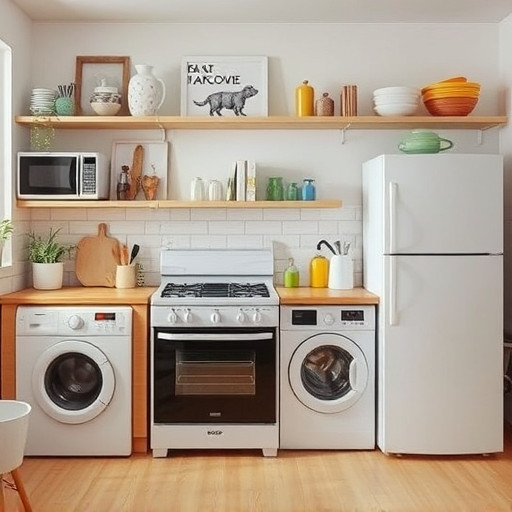
Common Issues and Troubleshooting Tips
When it comes to ovens and ranges, common issues can range from heating elements that don’t work to faulty control boards. If your major appliances aren’t performing optimally, troubleshooting is often the first step before considering a repair or replacement. For example, if your oven isn’t heating up, check the power supply and ensure all connections are secure. Burned-out heating elements can be replaced relatively easily by professionals or resourceful DIYers.
Control boards, which regulate temperature settings, are another common problem area. A malfunctioning control board can prevent your oven from reaching the correct temperature. Before assuming a board failure, though, verify that the thermostat is working correctly and that other components connected to the board are in good condition. Regular cleaning and maintenance of these appliances can help extend their lifespan and ensure safe cooking experiences.
Expert Advice on Regular Maintenance
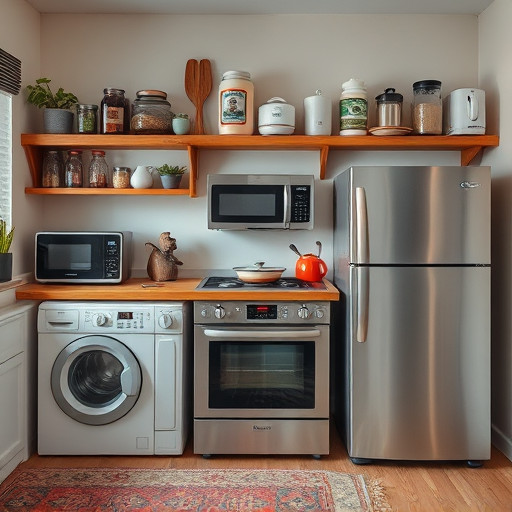
Regular maintenance is key when it comes to keeping your oven and range in top shape, ensuring safe cooking for years to come. As with any major appliance, a bit of preventive care can go a long way. Start by cleaning your oven regularly to remove built-up grease and grime. This not only improves hygiene but also prevents food from burning or smoking during cooking. Use oven-safe cleaners and follow the manufacturer’s instructions for best results.
Additionally, check gas lines and connections periodically for any signs of damage or leaks. Tighten loose fittings and replace worn-out parts to avoid potential hazards. For electric ovens, inspect heating elements and fuses regularly. Regular maintenance not only prolongs the life of your oven and range but also ensures consistent performance and safety during use.
When to Call a Professional for Repair
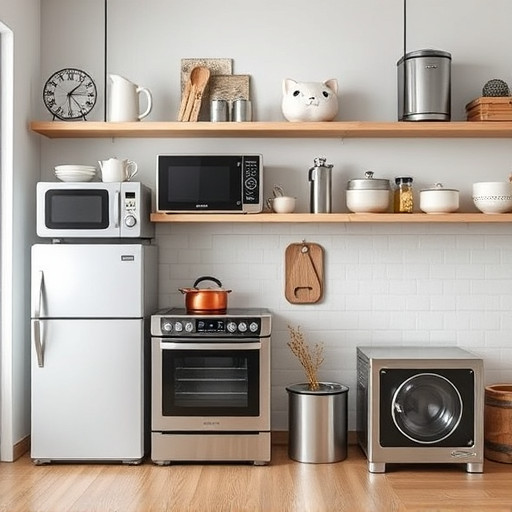
If your oven or range is experiencing issues, it’s crucial to know when to involve a professional for repair. While minor troubleshooting can sometimes fix common problems, complex issues with major appliances like ovens and ranges often require specialized knowledge and tools. These appliances are integral parts of our modern kitchens, and ensuring they function safely and efficiently is essential for enjoyable cooking.
Calling a professional is recommended for situations involving faulty heating elements, inconsistent temperature control, strange noises, or signs of physical damage. Delays in addressing these issues could lead to more severe problems, posing potential safety hazards during use. A qualified technician can accurately diagnose the issue, whether it’s a simple part replacement or a complex repair, ensuring your oven or range is repaired correctly and safely.
When it comes to major appliances like ovens and ranges, ensuring safe cooking involves understanding their safety features, proper installation, regular maintenance, and knowing when to seek professional repair. By following the step-by-step guide, troubleshooting tips, and expert advice outlined in this article, you can create a secure cooking environment for your family. Remember, preventing issues through regular care is key, but when problems arise, don’t hesitate to call a professional for prompt and reliable service.
